The Tangent Theorem for a Circle from an External Point
Consider a circle with two tangent lines passing through a point P outside the circle. The segments connecting point P to the points of tangency, T1 and T2, are congruent, $ \overline{PT_1} \cong \overline{PT_2} $ (i.e., they are of equal length).
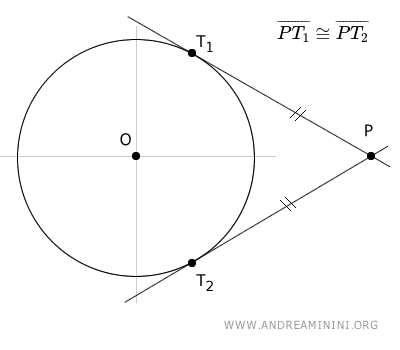
Additionally, there are three important properties to note:
- The segment OP, connecting the center O of the circle with the external point P, is the axis of the chord between the points of tangency T1 and T2, and acts as the symmetry axis for the segments PT1 and PT2.
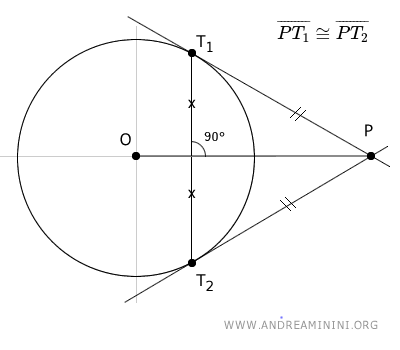
- The segment OP bisects the (red) angle formed by the radii of the circle that connect the center O to the points of tangency T1 and T2.
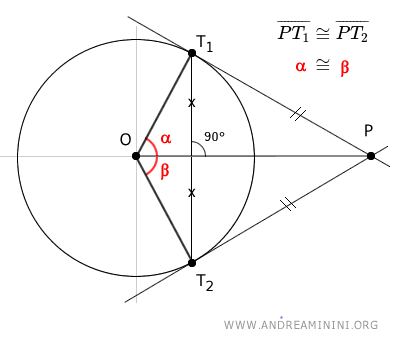
- The segment OP also bisects the (blue) angle formed by the two tangent lines PT1 and PT2 at point P.
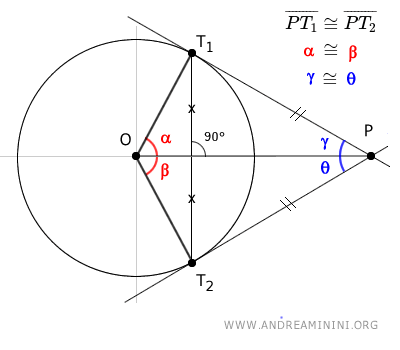
Proof
Consider a circle with radius OT1 and two tangent lines PT1 and PT2 passing through the external point P.
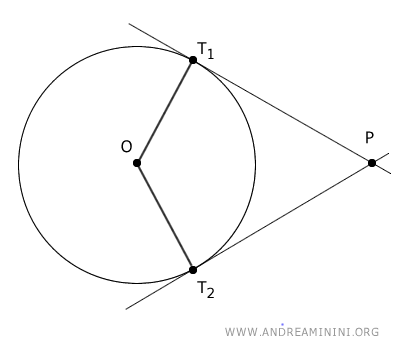
Draw the segment connecting the center of the circle O to the external point P.
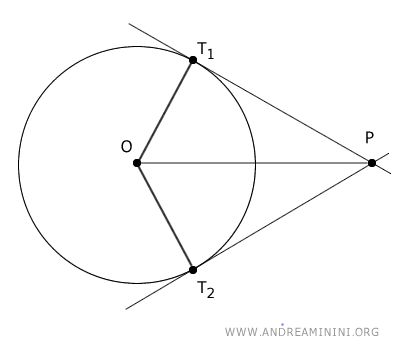
The points of tangency on the circle are T1 and T2.
The segments OT1 and OT2 are congruent because they are both radii of the circle.
$$ \overline{OT_1} \cong \overline{OT_2} $$
Knowing that the radii of the circle are always perpendicular to the tangent lines, we deduce that the radii OT1 and OT2 form a 90° angle with the segments PT1 and PT2, respectively.
$$ \overline{OT_1} \perp \overline{PT_1} $$
$$ \overline{OT_2} \perp \overline{PT_2} $$
Therefore, the triangles OPT1 and OPT2 are both right triangles.
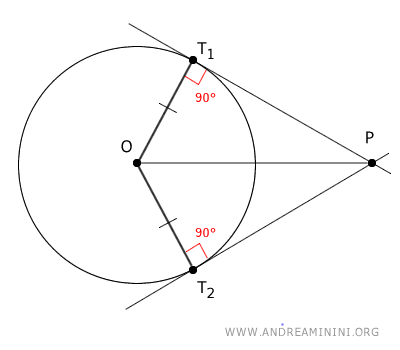
The two right triangles OPT1 and OPT2 are congruent by the right triangle congruence theorem because they have one congruent leg OT1 = OT2 and a common hypotenuse OP.
$$ OPT_1 \cong OPT_2 $$
Since the two triangles are congruent, all their sides and angles are congruent in the same order.
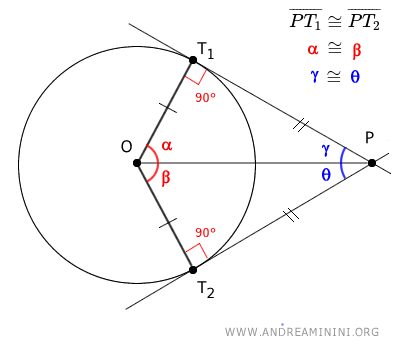
This shows that the segments PT1 and PT2 are congruent.
$$ \overline{PT_1} \cong \overline{PT_2} $$
Additionally, angles α = β and γ = θ are congruent.
$$ \alpha \cong \beta $$ $$ \gamma \cong \theta $$
Therefore, the segment OP bisects both the central angle O formed by the radii and the angle between the tangent lines at point P.
Finally, draw the chord T1T2 between the two points of tangency.
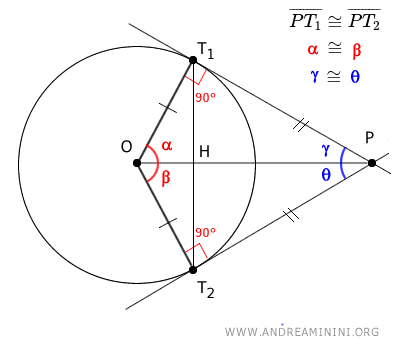
The triangle OT1T2 is an isosceles triangle because the two sides OT1 ≅ OT2 are congruent, being radii of the circle.
The segment OH is a bisector of the triangle because we already know that angles α ≅ β are congruent.
Knowing that in an isosceles triangle, the bisector coincides with the height, the axis, and the median, we deduce that:
- The segment OH is perpendicular to the chord T1T2 because OH is the height of the triangle.
- Point H is the midpoint of the chord T1T2 because OH is also the median.
Therefore, segment OH is an axis of the triangle OT1T2.
Since OH is part of segment OP, this proves that segment OP is the axis of the chord T1T2 between the two points of tangency.
And there you have it.
